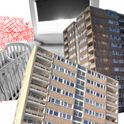On the morning of 1st July, Carrie Lam, Hong Kong’s beleaguered Chief Executive, clinked champagne flutes with two of the city’s past leaders on stage in a cavernous convention hall. The ceremony, marking the 22nd anniversary of the territory’s handover from Britain to China, was moved indoors for the first time, officially because of bad weather.
Outside, no rain was falling. Just a few miles away though, tens of thousands of protesters were mobilising for yet another public rebuke to Lam—and her purported masters in Beijing. Over the previous month, protesters had occupied major thoroughfares, twice laid siege to police headquarters and held record-breaking marches. Later on that same day, a group stormed the offices of Hong Kong’s legislature after hours spent pounding on tempered glass doors and windows. For many here, it was an understandable—if not condoned—show of frustration towards a government that refuses to listen.
The upheaval began when Hong Kong’s 70-seat legislature, dominated by a pro-Beijing bloc, attempted to fast track a bill that would allow for case-by-case extraditions to mainland China. The fear among an unusually diverse swath of the city’s population—business executives, social activists and religious leaders alike—was that the bill represented a death knell for Hong Kong’s relative autonomy from China. This semi-autonomy was guaranteed under the “one country, two systems” framework that the territory was promised would operate for 50 years after the 1997 handover.
Lam eventually proclaimed that the bill was “dead,” though it was not immediately withdrawn and protestors wanted to see it buried. Everything Lam and her government has done to pacify demonstrators has been dismissed as insincere. Their demands have quickly grown to include calls for police to be independently investigated for their use of force, for charges against arrested demonstrators to be dropped and for Lam to quit.
An undercurrent of these protests is the deep fear that Beijing is working to subdue Hong Kong, erase its unique and fiercely defended identity, and create a neutered populace that can no longer exercise its rights and freedoms. At a rally in the Kowloon district in early July that organisers claimed drew 230,000 participants, one 33-year-old said: “In the end, there won’t be any Hong Kong people anymore.”
And in this, they view the Hong Kong government as complicit, more concerned with overlords in China than its domestic constituency. The storming of the Legislative Council building was done to demonstrate its illegitimacy. It is only half directly elected, and a number of pro-democracy candidates have been booted out or barred from running for office recently. The chief executive is selected by a 1,200-member committee dominated by Beijing loyalists and business interests, from a pool of candidates vetted by Beijing.
Lam has proved fantastically inept at reading and navigating public sentiment. She has alternated between admonishing protesters, apologising and hiding. Her predecessors suffered similar pitfalls. Tung Chee-hwa resigned in 2005 after mass protests, while CY Leung decided against running for a second term after his unpopular handling of a 79-day sit-in demanding the right to directly elect the chief executive.
Frustrations that these leaders are merely pawns of Beijing cannot be separated from Hong Kong’s underlying economic issues—particularly its astronomical housing costs. The property market has seen a vertiginous rise in prices over the past decades fueled by a land shortage and an influx of money from the mainland. Many of the young people showing up to demonstrations spoke of doubts that they would ever be able to afford a home. The average price of a 60 square metre flat on Hong Kong island is now HK$11.3m (£1.2m). The average wait time for public housing stands at five and a half years.
Critics say that government has been too focussed elsewhere. Last September, the West Kowloon railway station linking Hong Kong via high-speed rail to the mainland opened; a sweeping steel and glass wave rising near Victoria Harbour. Soon after, a multi-billion dollar bridge connecting Hong Kong to China opened. The projects are viewed by many with great scepticism, as a way to draw Hong Kong into Beijing’s grand plan of southern China interconnectivity. Most concerning was the creation of a “mainland port area” inside the high-speed rail terminus—the area is governed by mainland laws enforced by mainland police officers.
One protester I spoke to, who had entered the Legislative Council on 1st July hours after Lam’s photo-op, accused politicians of selling out the city. “These people say they love Hong Kong,” he said, “but they have betrayed us.” Protesters have brought down leaders in Hong Kong before—what they haven’t done yet is prevent the gradual eroding of their freedoms.













